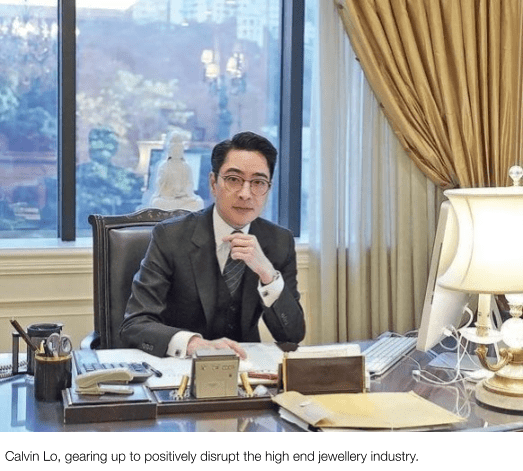
Hong Kong Billionaire Calvin Lo Stocks Up in Highly Collectible Jewellery
Last Updated on June 29, 2022 by Andrew
Billionaire Calvin Lo’s private investment company, R.E. Lee Octagon, is leading a consortium that will be specifically dedicated to investing in rare and highly collectible jewellery.
While Lo’s US$10 billion Singapore-based fund did not participate in this “Legacy Jewellery Fund”, his personal investment along with other investors totalled US$1.1 billion, making this one of the world’s largest funds dedicated exclusively to investing in rare and highly collectible jewellery. Hong Kong media reported that the demand is so high that Lo is already in the process of setting up tranche 2, in which Lo’s main fund may participate.
Lo is the world’s most reclusive billionaire, the richest person you have never heard of, someone who dodges the limelight almost obsessively. However, some of his high-profile investments have caught some attention in recent years, such as his purchase of Mandarin Oriental Hotel in Taipei, of the legendary Williams F1 Racing Team, and his US$230 million champagne collection, just to name a few. Many say he has the Midas touch, making money in whatever he puts his mind to. It is no wonder that Lo was able to raise a staggering US$1.1 billion in a matter of months.

In his leaked email to investors, Lo summarises how to determine whether a piece is investment-worthy; it should be vintage, high quality, in good condition, beautiful and autographed by the manufacturer. It almost goes without saying that Lo wants to choose something from a house’s best period, say 1920 to 1930, for some designers. That means, in some cases, you have only 10 years’ worth of picks to collect, as opposed to 80 Years. While most historic houses are strong investments—think of Belperron, Oscar Heyman and Harry Winston—sources close to Lo say only three names stand above the rest for him: Bulgari, Cartier and Van Clef & Arpels, as rumours have it that he has an extensive personal collection from them already.
Each has its own golden era. For Bulgari, these would be the La Dolce Vita period in the 1960s. Van Clef & Arpels is noted for its Art Deco period as well as its 1960s and 1970s pieces. Cartier’s Art Deco pieces from the 1920s and 1930s are among the most iconic from the house, including the legendary Tutti Frutti.
Jewellery, of course, has an intrinsic value. It is made of gems like diamonds, emeralds, rubies and sapphires, and set in metals like platinum, gold and silver that are valuable in their own right. Many pieces also have sentimental value, having come from family members or having been given on a special occasion. However, the pieces with the most investment potential have a level of craftsmanship in addition to scarcity, which makes them stand out from the beautiful baubles that are produced year after year—and appreciate beyond the value of their metals and gems. These are not the run-of-the-mill pieces that a mall jeweller might sell. In fact, people buying these pieces would be hard-pressed to see significant appreciation over time.
According to the 2022 Hurun Chinese Luxury Consumer Survey of Chinese’s HNWIs released earlier this year, 92% of HNWIs have the habit of collecting, in which jewellery is still the most popular collectible for them. The market outlook is optimistic, and Lo seems to be way ahead of the game once again.




